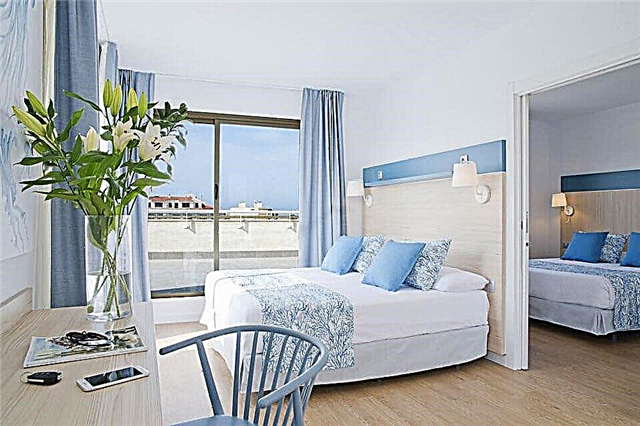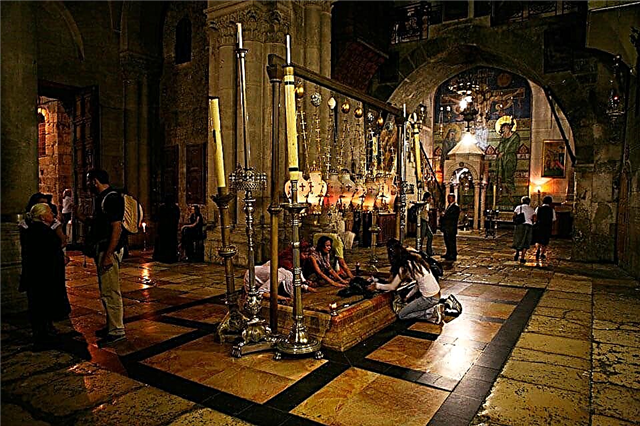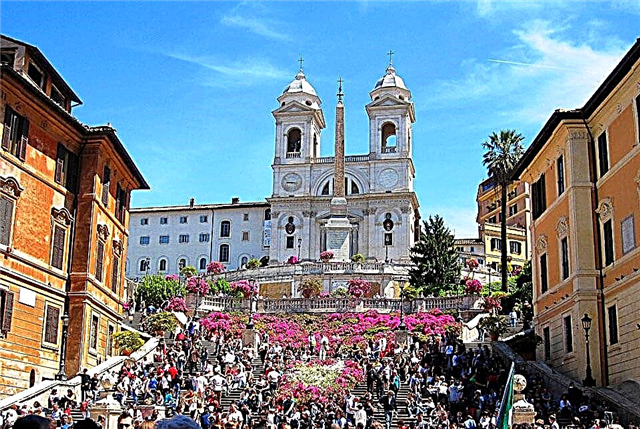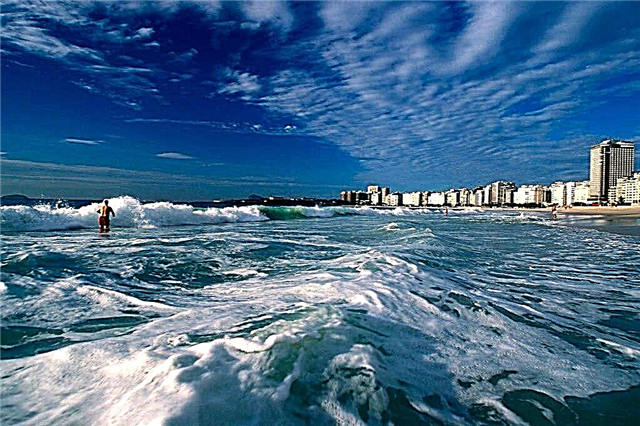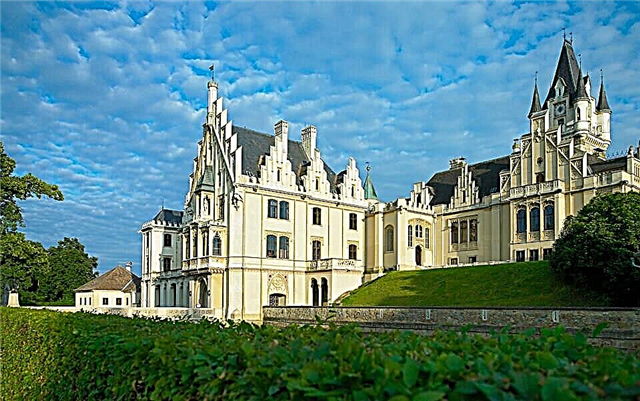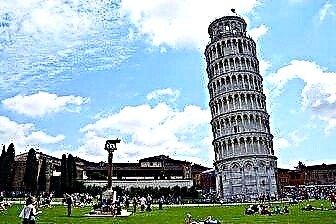The small Italian city of Pisa has become famous throughout the world for its leaning tower. Almost all organized tours in Italy include a visit to this unusual attraction, which has been in danger of falling completely for more than one century and is only held up thanks to the constant work to strengthen it. The Leaning Tower of Pisa is located in Piazza dei Miracoli ("Square of Miracles"). There are several more architectural masterpieces here. The ensemble of the square is included in the UNESCO list.
In Pisa, there are other equally interesting and picturesque places. The city quarter Borgo Stretto is popular, which is an example of medieval buildings typical for Western Europe of the XIII-XIV centuries. A must-see in Pisa should be its wonderful museums, where you can admire the works of sculptors and painters who worked during the Middle Ages and Modern Times.

The best hotels and hotels at affordable prices.
from 500 rubles / day
What to see and where to go in Pisa?
The most interesting and beautiful places for walking. Photos and a short description.
Leaning tower of pisa
The most famous landmark of Pisa, known all over the world due to a mistake made during construction. The building is part of the architectural complex of the Pisa Cathedral and is its bell tower. The tower was erected during the XII-XIV centuries according to the project of B. Pisano. Almost immediately, the building began to deviate from the vertical axis, because of which the work was constantly suspended. The defect could not be corrected, but the inexorable fall of the tower was stopped by fixing the roll at 3.54 °.

Pisa Cathedral
Cathedral of the city of Pisa, located in the Piazza del Duomo. The architectural complex includes the building of the cathedral itself, the bell tower (the famous leaning tower) and the baptistery. The ensemble was built during the 11th-13th centuries. in the "Pisa" Romanesque style, which combined elements of the Lombard, Byzantine and Islamic style of construction. White and black marble was used in large quantities in the decoration of the facade and interior.

Baptistery of Saint John
Magnificent Gothic building of the XII-XIV centuries, erected by the architect Diotisalvi. The baptistery is considered the largest in Italy. The building is 55 meters high, the diameter of the wall ring is 34 meters. According to the original project, the building was planned to be built in the Romanesque style, but the duration of construction work of almost 200 years made it possible to add more graceful features of the Gothic style to the appearance.

Cemetery Campo Santo
A 13th century necropolis located in the northern part of Piazza dei Miracoli. It was assumed that a church was to be built on the site of the cemetery, but during the work the project was changed. Campo Santo is a rather unusual place, since the burials are located in a stone wall under the arches of an arched gallery that will surround the courtyard. There are three chapels on the territory of the cemetery. Until the 18th century, representatives of the upper strata of Pisa were buried in this necropolis.

Borgo Stretto quarter
Historic urban area located in the center of Pisa. From an architectural point of view, it is a classic "stone bag" with narrow streets, houses, which are characterized by blank medieval walls, and small picturesque squares. Nowadays, numerous street restaurants with excellent Italian cuisine, souvenir shops, coffee shops and counters with various delicacies are concentrated on the territory of Borgo Stretto.

Knights square
For many centuries, the square has been an important public place, where government decrees were announced, victories were celebrated and the political situation discussed. The Piazza was built during the Early Middle Ages on the site of a former Roman forum. It is surrounded by palazzo and administrative buildings, built mainly in the 16th-17th centuries. In 1406, the independence of Pisa was declared in the Square of the Knights.

Caravan Palace
The building of the 16th century, which previously served as the home of the knights who belonged to the Tuscan Order of St. Stephen. The building was erected by the architect D. Vasari. Nowadays, a higher educational institution is located on the territory of the palace. Visiting the palazzo is possible only during the absence of lectures. The facade of the building is painted using sgraffito technique, it depicts the signs of the zodiac and symbolic figures surrounded by floral ornaments.

Sinopia Museum
The museum displays fragments of frescoes (more precisely, sketches for frescoes) that previously adorned the walls of Campo Santo. After World War II, during restoration work, these images were found under the top layers of plaster. In addition to blanks for frescoes, in the museum you can see a model of the Campo Santo cemetery of previous eras and an installation dedicated to the problem of strengthening the Leaning Tower of Pisa.

Opera del Duomo Museum
The museum's collection consists of works of art that previously adorned the walls of Pisa Cathedral and the Baptistery of St. John. The exposition is located in a 12th century building that was previously used as a seminary and academy of fine arts. The museum contains valuable sculptures created by T. Di Camaino and D. Pisano in the XIII century, bronze doors made in the XII century, as well as frescoes, paintings, clothes and other exhibits belonging to the XVII-XVIII centuries.

National Museum of San Matteo
The exposition is located in the monastery of the same name. It is dedicated to the cultural history of the Middle Ages and contains priceless works of art created by Tuscan craftsmen in the XII-XVII centuries. Works by D. Pisano, B. Berlingieri, B. Buffalmacco, S. Aretino and other sculptors are exhibited in San Matteo. It also houses the famous work of Donatello - the bust of San Lussorio. In the museum you can look at medieval manuscripts dating from the XII-XIV centuries.
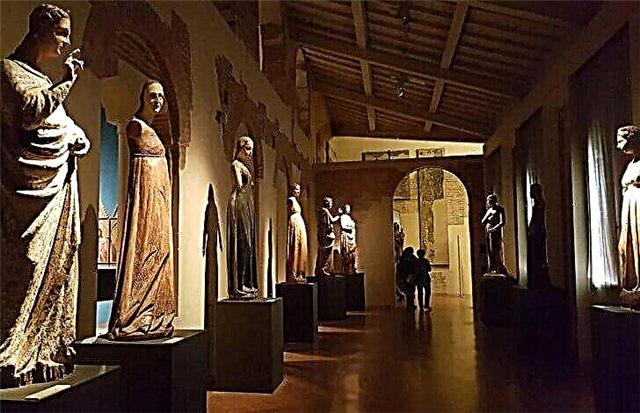
Palazzo Blue Museum
Palazzo Blue is an art museum housed in a historic 14th century mansion that previously changed owners frequently and belonged to different families. Until 2001, representatives of the noble Julie family lived in the building, then it was transferred to the jurisdiction of cultural bodies. After reconstruction, the palazzo housed an exhibition consisting of works by D. Battista, J.-B. Demare, D. Bezzuoli, F. Bellonzi and other artists.

Church of Santa Maria della Spina
Temple of the XIX century, built in the Gothic style on the site of the old church of the XIII century. The church façade is distinguished by its rich decor and an abundance of elegant details. The interior space looks rather modest in comparison with the exterior finish. The most important relic of Santa Maria della Spina is the tabernacle, in which, according to the Christian faith, sometime in the 14th century the thorn from the crown of thorns of Jesus was kept.

Church of Sao Paulo Ripa d'Arno
A temple of Romanesque architecture, the first mention of which dates back to the 10th century. Previously, he played a rather important role in the religious life of Pisa, so the unofficial name "Duomo Vecchio" was assigned to the church, which means "old cathedral". Inside the temple there are several ancient relics: a Roman sarcophagus of the 2nd century, a crucifix created in the 13th century, and frescoes of the 13th-14th centuries painted by B. Buffalmaco.

Basilica of San Piero Grado
Temple of the IX (X) century, erected on the site of an early Christian prayer house. Even earlier, there were Roman residential quarters here. At this very place in 44 AD the Apostle Peter celebrated his first Mass. The church is located in the town of San Pietro a Grado, which belongs to the Pisa commune. The painting of the interior walls of the basilica dates back to the 14th century and later. The temple is a valuable monument of Romanesque architecture.

Citadel with Guelph Tower
Construction of the XIII century, erected on the embankment of the Arno River. Previously, the citadel with an adjoining tower was part of the city's defensive fortifications. At the beginning of the 15th century the military garrison of Pisa was located here. For many centuries, the citadel served as a protective function. During the Second World War, the building was badly damaged by bombing. In 1956, it was restored, trying to give its original appearance.

Ponte di Mezzo bridge
Small central bridge over the Arno River, located near Santa Maria della Spina. All tourists who head from Pisa Central Station to Piazza del Duomo, where the Leaning Tower is located, pass along it. The bridge offers magnificent views of the river, embankments and old houses. The building itself is made in a rather modest manner without any architectural excesses.

Arno river
Waterway of Tuscany, which originates in the Apennines and flows into the Ligurian Sea. The river flows through Florence and Pisa. Arno is 248 km long. It flows through the picturesque plains, hills, vineyards, cypress groves and fields that make up the pastoral landscapes of this part of Italy. Periodically, the river overflows its banks as a result of floods. The largest natural disaster was recorded in 1966.

Pisa botanical garden
The garden was founded in the 16th century by the botanist L. Guini at the expense of the Tuscan ruler - Duke Cosimo I. It is considered one of the oldest botanical gardens not only in Italy, but throughout the world. In 1595, a building was erected here, which houses the Institute for Plant Research. The garden's plant diversity brings together about 550 species collected from different parts of Europe and the world. The arboretum is run by the University of Pisa.

Scotto's garden
The garden is located on the southern bank of the Arno on the territory of the Citadel Nuova fortress, which was founded in the 15th century. The landscape park was laid out in the 19th century according to the project of D. Kaluri. The Scotto Garden hosts various social events such as concerts, theatrical performances, museum exhibitions and film screenings. The park is planted with picturesque Mediterranean vegetation. It is the perfect place for relaxing walks.

Migliarino Natural Park, San Rossore, Massachuccoli
Regional Park of the Province of Tuscany, created in 1979. Several ecosystems are located on the territory of the reserve: swamps, sand dunes, a lake, and a coastal zone. The park is home to a wide variety of birds. Within the reserve are the towns of Torre del Lago and Massachuccoli (the composer D. Puccini lived here for a long time). The administration is located in a 19th century villa, which is also a local landmark.


